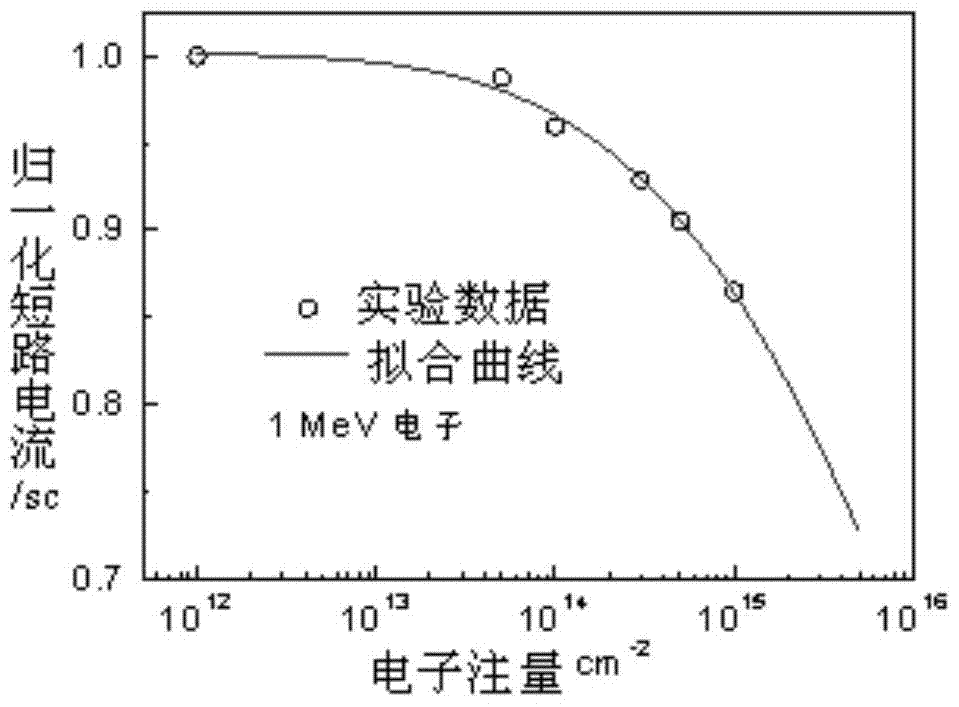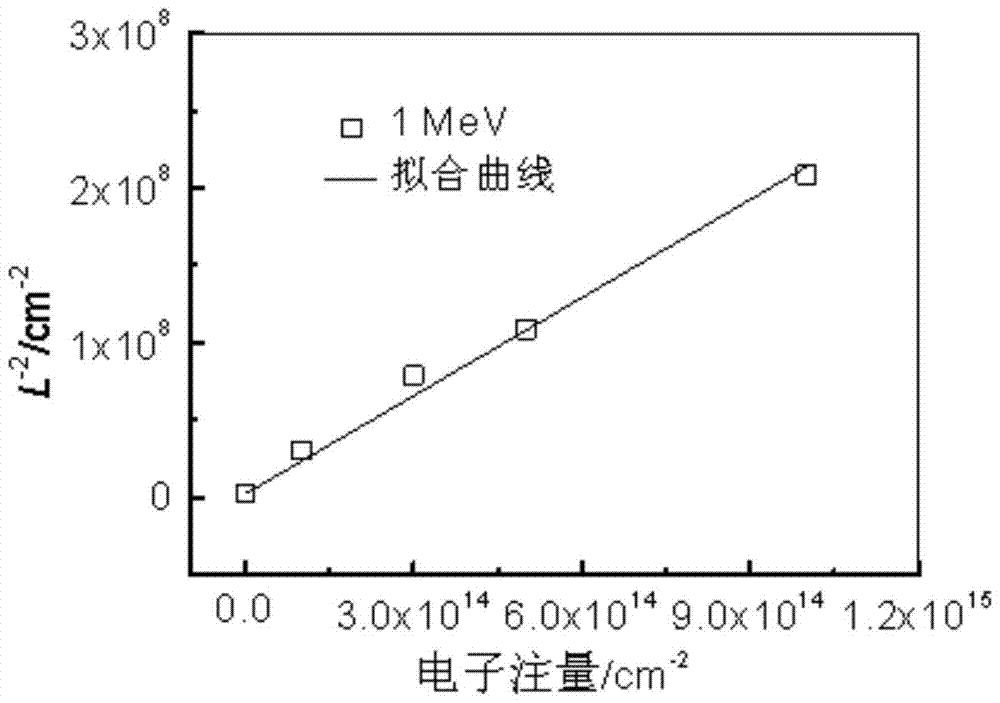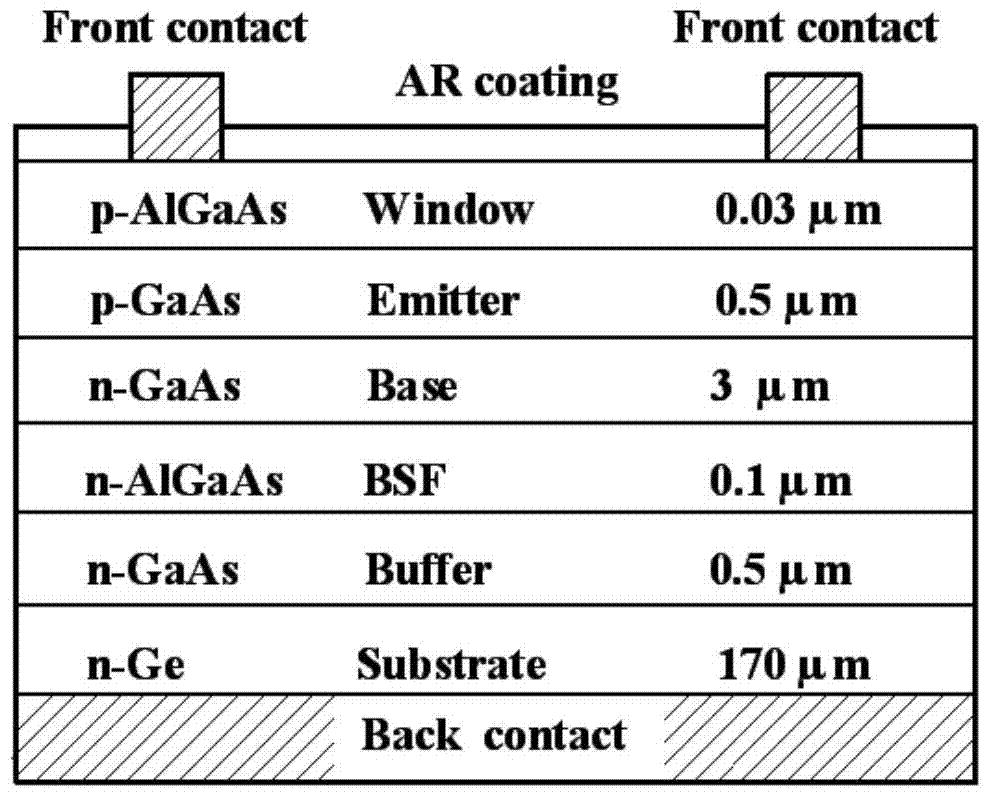A method for analyzing minority carrier transport in spatial single-junction solar cells
A technology for minority carriers and solar cells, which is applied in the fields of electrical digital data processing, special data processing applications, instruments, etc., and can solve problems such as carrier transport properties and solar cell radiation damage
- Summary
- Abstract
- Description
- Claims
- Application Information
AI Technical Summary
Problems solved by technology
Method used
Image
Examples
specific Embodiment approach 1
[0021] Embodiment 1: A method for analyzing minority carrier transport in a spatial single-junction solar cell according to this embodiment is specifically prepared according to the following steps:
[0022] Step 1. Establish a mathematical model of short-circuit current degradation of solar cells based on the carrier transport model of semiconductor materials under the irradiation of space charged particles and the energy band model of solar cells:
[0023]
[0024] In the formula, A=qαF(1-R)exp(-αx j ), q is the electron quantity, R is the reflectivity, F(1-R) is the total incident flux when the reflectivity of the incident light is R, α is the absorption coefficient, x j is the junction depth of the solar cell; L 0 is the diffusion length of minority carriers before irradiation, Φ is the fluence of irradiated particles, K L is the minority carrier diffusion length damage coefficient; e is the natural exponent; L 0 is the diffusion length of the minority carrier befo...
specific Embodiment approach 2
[0035] Specific embodiment two: the difference between this embodiment and specific embodiment one is: the electron fluence selection method of charged particle irradiation in step two is:
[0036] (1) Due to the damage effect of space solar cells under electron irradiation, there is an energy threshold for atomic displacement, so the electron energy of electron irradiation is greater than 200keV, and the incident electron energy of electron irradiation is selected from 4 to 6 energy values;
[0037] (2) According to the parameters of common experimental equipment, select electron energies of 1, 2, 4 and 10 MeV for reference; the selection of electron fluence should be based on the degradation range of battery electrical parameters, and the degradation range of the maximum power of the battery is required to reach Below 75% before irradiation, the selected electron fluence value is more than 4. Other steps and parameters are the same as those in Embodiment 1.
specific Embodiment approach 3
[0038] Embodiment 3: The difference between this embodiment and Embodiment 1 or 2 is that the method for selecting the proton fluence of charged particle irradiation in step 2 is:
[0039] (1) Since the degradation of electrical parameters of solar cells under the irradiation of protons less than 200keV is closely related to the energy of incident protons; For the energy values of protons in the emission area, space charge area and base area of the battery, select 3 to 5 protons with different energies;
[0040](2) The degradation range of electrical parameters of solar cells under proton irradiation greater than 200keV decreases with the increase of incident proton energy; according to the specific parameters of the experimental equipment, 3 to 5 kinds of proton energy values with an energy interval of 1 to 3 MeV can be selected; The selection of proton fluence should be based on the degradation range of battery electrical parameters. It is required that the degradation...
PUM
 Login to View More
Login to View More Abstract
Description
Claims
Application Information
 Login to View More
Login to View More - R&D Engineer
- R&D Manager
- IP Professional
- Industry Leading Data Capabilities
- Powerful AI technology
- Patent DNA Extraction
Browse by: Latest US Patents, China's latest patents, Technical Efficacy Thesaurus, Application Domain, Technology Topic, Popular Technical Reports.
© 2024 PatSnap. All rights reserved.Legal|Privacy policy|Modern Slavery Act Transparency Statement|Sitemap|About US| Contact US: help@patsnap.com










